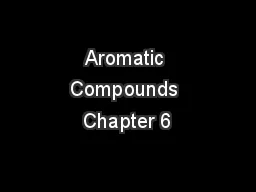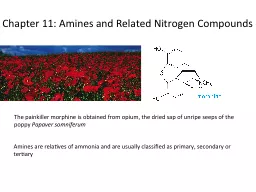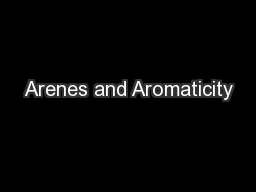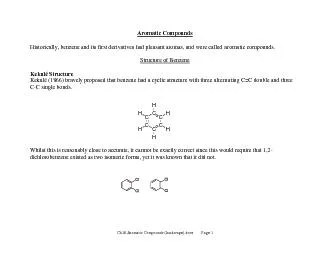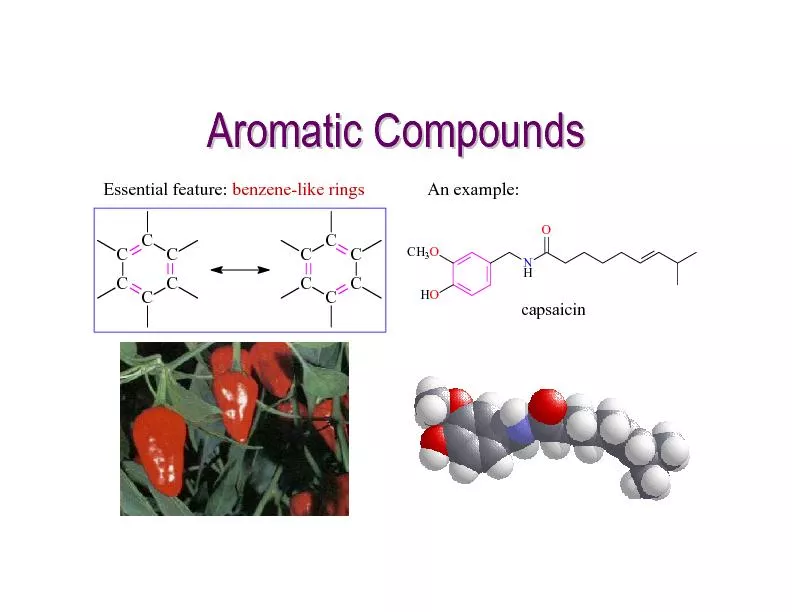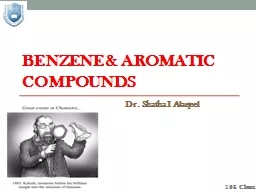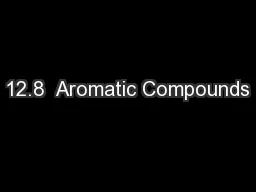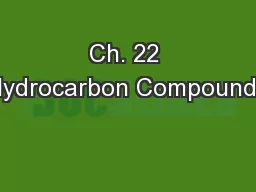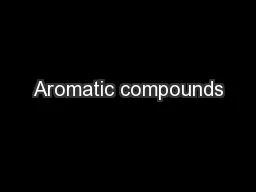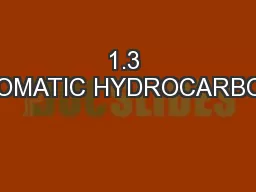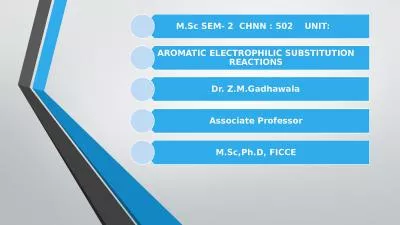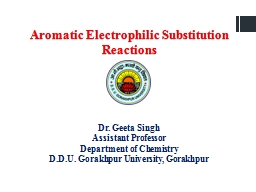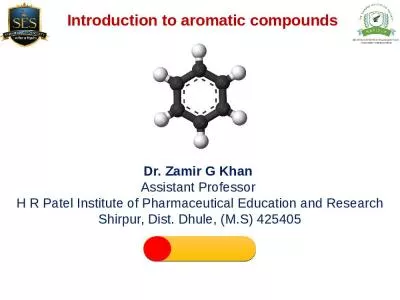PPT-Aromatic Compounds Chapter 6
Author : tatiana-dople | Published Date : 2018-03-07
240 Chem 1 The expressing aromatic compounds came to mean benzene and derivatives of benzene Structure of Benzene Resonance Description C 6 H 6 It contains
Presentation Embed Code
Download Presentation
Download Presentation The PPT/PDF document "Aromatic Compounds Chapter 6" is the property of its rightful owner. Permission is granted to download and print the materials on this website for personal, non-commercial use only, and to display it on your personal computer provided you do not modify the materials and that you retain all copyright notices contained in the materials. By downloading content from our website, you accept the terms of this agreement.
Aromatic Compounds Chapter 6: Transcript
240 Chem 1 The expressing aromatic compounds came to mean benzene and derivatives of benzene Structure of Benzene Resonance Description C 6 H 6 It contains a sixmembered ring and three additional degrees of unsaturation. And 57375en 57375ere Were None meets the standard for Range of Reading and Level of Text Complexity for grade 8 Its structure pacing and universal appeal make it an appropriate reading choice for reluctant readers 57375e book also o57373ers students The painkiller morphine is obtained from opium, the dried sap of unripe seeps of the poppy . P. apaver. . somniferum. Amines are relatives of ammonia and are usually classified as primary, secondary or tertiary. (. Benzene. ). 140 pm. 140 pm. 140 pm. 140 pm. 140 pm. 140 pm. All C—C bond distances = 140 pm. Benzene. empirical formula. = CH. 140 pm. 140 pm. 140 pm. 140 pm. 140 pm. 140 pm. . 146 pm. 134 pm. Conjugation and Aromaticity. Which resonance form contributes more? . . A B C D. A = C > B E. B > A = C. Conjugation and Aromaticity. Do you expect a difference in bond lengths?. . a. yes b. no. page 1 Aromatic Compounds Historically, benzene and its first derivatives had pleasant aromas, and were called aromatic compounds. Structure of Benzene Kekul Aromatic CompoundsEssential feature: benzene-like ringscapsaicinHOCH3ONHO An example: CCCCCC CCCCCC Polycyclic Aromatic Compounds Polycyclic Aromatic Compounds naphthaleneanthracenephenanthrenepyreneb Dr. . Shatha. I . Alaqeel. 108 . Chem. Learning Objectives. By the end of chapter four the students will:. Understand the resonance description of structure of benzene. Understand the hybridization in benzene. In 1825, Michael Faraday isolated a hydrocarbon called benzene, which consists of a six-carbon ring with alternating double bonds and the molecular formula C. 6. H. 6. . . Learning Goal . Describe the bonding in benzene; name aromatic compounds, and draw their line-angle structural formulas.. 22.1 Hydrocarbons. Organic Chemistry. includes almost all carbon compounds. Not limited to compounds found in living cells. Hydrocarbon: organic compound made of only hydrogen and carbon atoms. hydrocarbons. 1435-1436. 2014-2015. Learning Objectives. . Understand the. . resonance description of structure of benzene. Understand the hybridization in benzene. Understand the relation between the stability of benzene and resonance energy. MICHAEL FARADAY (1791-1867). first person to isolate and identify benzene. early benzene uses:. - . decaffeinate . coffee. - antiknock additive . in gasoline. - solvent in chem rxns. now we know benzene is a carcinogen!. Arenium Ion Mechanism . Some Aromatic Electrophilic Substitution Reactions Viz. Nitration, Sulphonation, Halogenation, Friedel- Crafts Reaction. Orientation & Reactivity in Mono Substituted Benzene. Dr. Geeta Singh. Assistant Professor. Department of Chemistry. D.D.U. Gorakhpur University, Gorakhpur. Introduction. Key . terms.. General reaction for aromatic electrophilic substitution.. Common reactions of AES.. D. r. . Zamir G Khan . Assistant Professor . H R Patel Institute of Pharmaceutical Education and Research Shirpur, Dist. Dhule, (M.S) 425405. Copyright @ Mr. Z G Khan. 2. If benzene is 1,3,5-cyclohexatriene as .
Download Document
Here is the link to download the presentation.
"Aromatic Compounds Chapter 6"The content belongs to its owner. You may download and print it for personal use, without modification, and keep all copyright notices. By downloading, you agree to these terms.
Related Documents

